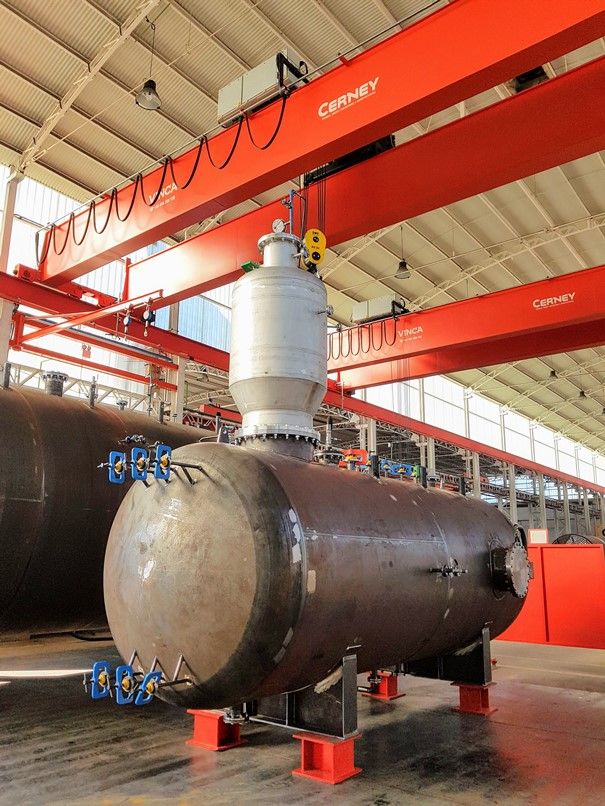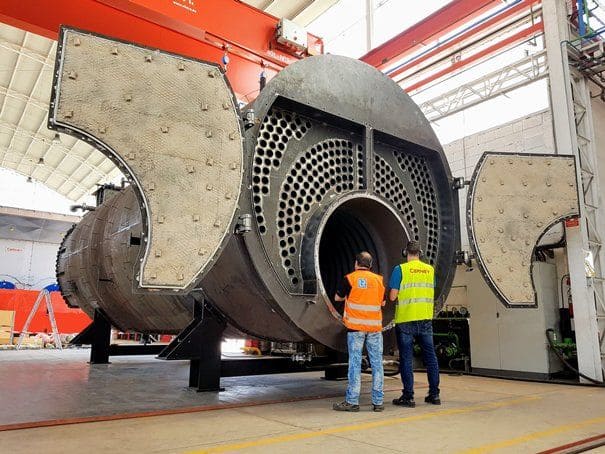Apart from caring for all production processes, it is necessary to ensure the quality and safety of the equipment, particularly those elements that are subjected to mechanical stress due to pressure. One of the tests that complements others (such as x-rays, ultrasounds, liquid penetrants or visual inspections) is the hydrostatic pressure test, commonly known as the hydraulic test.
It is defined as the application of pressure inside an item of equipment or pipeline which is out of operation (greater than the outside pressure), in order to verify its strength and sealtight integrity, taking into account the welded and flanged joints, using a non-corrosive fluid, normally water, as the main element.
The applicable European legal framework is the Pressure equipment directive «2014/68/EU», which indicates the need to carry out this test on all new equipment or piping lines, either at the manufacturer’s premises or at the premises of the owner and/or user when the lines are installed on site. Hydrostatic pressure testing is also required when repairs or modifications are made to previously commissioned equipment or lines.
Equipment that has been tested in the manufacturer’s workshops does not normally need to be retested after installation, unless required by any of the parties involved or if there is a suspicion that the equipment has been damaged in transit.
The design codes of the equipment and piping lines set out the physical conditions that must be met before, during and after the hydrostatic pressure test in order to guarantee reliable results. These conditions refer to the test pressure, ambient and fluid temperature, and the intrinsic characteristics of the material.
Although the applicable standards can have very different origins, CERNEY is able to manufacture under any prestigious standard (see European standards such as: EN13445 for unfired pressure equipment, EN12952 for water-tube boilers, or EN12953 for fire-tube boilers, AD-Merkbläter, BS, ACE, CODAP; American Standards such as ASME I for boilers, ASME VIII for pressure equipment, ASME B31.1 for power lines and B31.3 for process lines, ANSI, API, etc.).
Furthermore, from a safety perspective, the party responsible for the test must issue technical procedures and/or instructions on how to carry it out. In turn, it may be necessary or compulsory for these to be approved by third parties.

The actual purpose:
We now know what a hydrostatic pressure test is and when it should be carried out, but what is the actual purpose of the test?
When the hydrostatic pressure test is performed, the material is subjected to extraordinary conditions which are much more demanding than those found during normal operation; for this reason, if the internal pressure value remains constant during the test and the visual inspection shows that there are no leaks or permanent deformations, it is understood that the equipment or line has been designed and manufactured according to the required criteria, and can therefore be considered safe.
